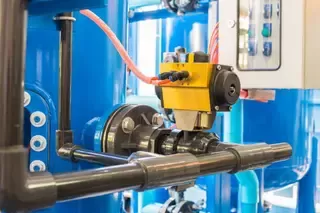Notifications

5 minutes, 14 seconds
-70 Views 0 Comments 0 Likes 0 Reviews

China Control valves are vital in regulating flow, pressure, and temperature in diverse industries including oil and gas, chemical processing, power generation, and water treatment. Their reliability is crucial for maintaining operational efficiency, avoiding unplanned shutdowns, and minimizing safety risks and costly repairs.
Despite their robust design, control valves inevitably experience wear and tear due to harsh environments and continuous use. However, many common valve failures can be mitigated or prevented through proactive maintenance and smart operational practices. This article examines typical control valve issues, actionable tips to extend valve service life, and maintenance strategies that preserve performance and reduce downtime.
1. Internal Leakage
Internal leakage occurs when a valve fails to fully close, allowing fluid to bypass the seat unnoticed. This hidden issue can degrade system efficiency, cause equipment damage, and compromise safety.
Causes:
Improper actuator or positioner setup
Worn seals, seats, or internal components
Incorrect control system configuration
Debris obstructing sealing surfaces
Solution:
Have qualified technicians inspect and repair or replace faulty parts. Proper calibration and regular performance monitoring prevent reoccurrence.
2. External Leakage
Fluid escaping from the valve body or bonnet is usually easier to detect and signals potential safety or environmental hazards.
Causes:
Worn packing or seals
Incompatible materials for the process fluid
Wear from vibration or thermal cycling
Loose bolts or structural damage
Solution:
Replace deteriorated packing and gaskets, ensure material compatibility, tighten fasteners, and perform vibration assessments.
3. Sticking Valve
Valves that respond sluggishly or fail to move can disrupt process control and lead to equipment damage.
Causes:
Over-tightened packing increasing friction
Corrosion on stems or internal parts
Accumulated debris within the valve
Solution:
Clean and lubricate components, carefully follow torque specs for packing, and use upstream filtration to limit contaminants.
1. Operate Valves at Wide Openings Initially
Starting operation with valves nearly fully open (e.g., 90%) localizes wear to less critical spool or plug areas. Gradually throttling over time distributes wear more evenly, potentially increasing valve life by 1 to 5 times.
2. Reduce Valve Resistance Ratio
Minimizing pressure drop across the valve lowers internal stress and erosion. Techniques include:
Installing orifice plates downstream
Partially closing manual isolation valves
Selecting valves sized to operate at larger openings
3. Downsize the Valve to Increase Operating Range
Oversized valves tend to operate at low openings, concentrating wear and causing instability. Using smaller valves or trims with reduced flow coefficients promotes wider operating ranges and smoother flow control.
4. Redirect Damage to Less Critical Areas
Modifying flow conditions or trim design can shift erosion from sealing surfaces to sacrificial or less critical parts, preserving essential components.
5. Reverse Flow Direction When Possible
Configuring flow-to-close operation moves cavitation and erosion away from seats, protecting sealing surfaces and extending valve life.
1. Passive (Reactive) Maintenance
Repairing valves only after failure risks costly downtime. Use as a last resort or emergency response.
2. Preventive Maintenance
Scheduled inspections and upkeep—including cleaning, lubrication, seal checks, and structural assessments—reduce unexpected failures and extend valve longevity.
3. Predictive Maintenance
Utilizing smart diagnostics such as positioners, vibration sensors, and acoustic leak detection enables real-time health monitoring and failure prediction, optimizing maintenance timing and minimizing disruptions.
The durability and reliability of control valves can be greatly enhanced through thoughtful operation, smart design choices, and rigorous maintenance. By understanding common failure modes and implementing proactive strategies, operators can maximize valve lifespan, boost system efficiency, and reduce costs.
Whether handling steam, chemicals, or water, applying these best practices ensures control valves remain a robust and cost-effective asset in your process control system.
Key Takeaway: Control valves are critical long-term investments—treating them with foresight, precision, and care ensures consistent performance and dependable operation for years ahead.Learn more about Google SEO.

